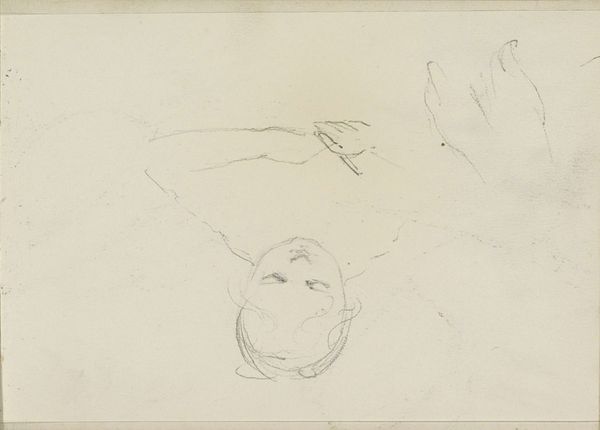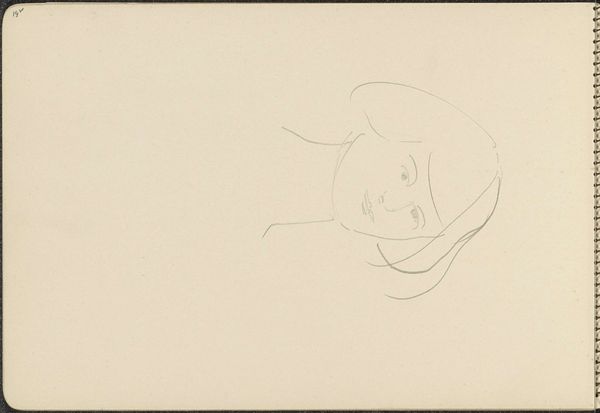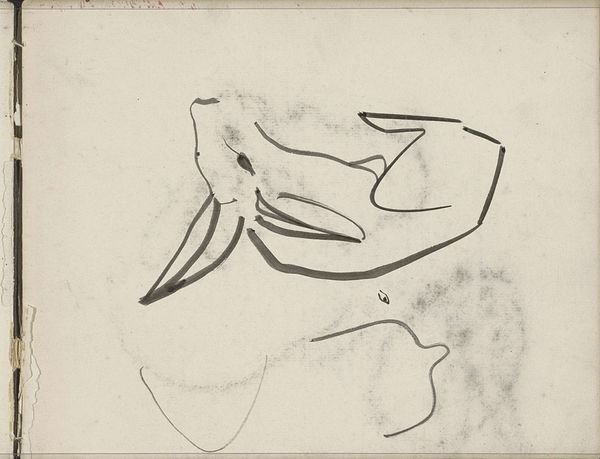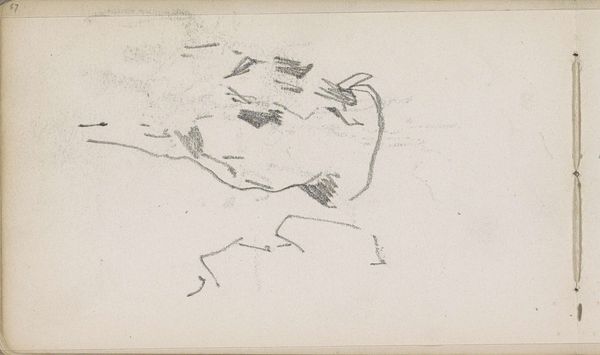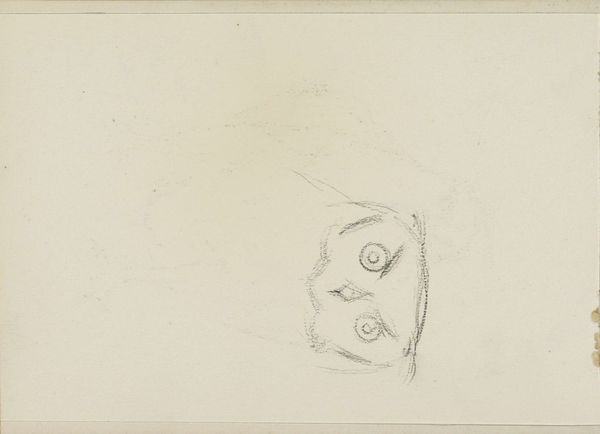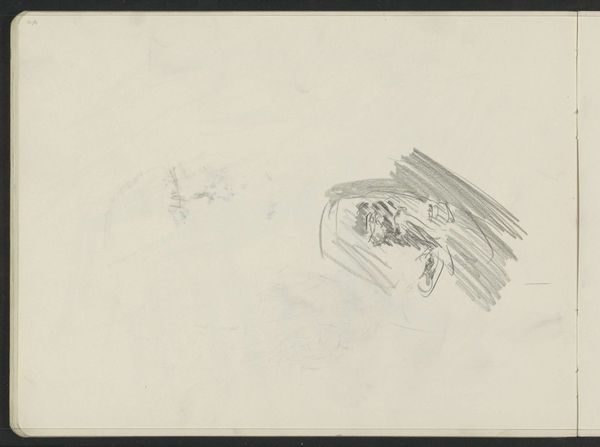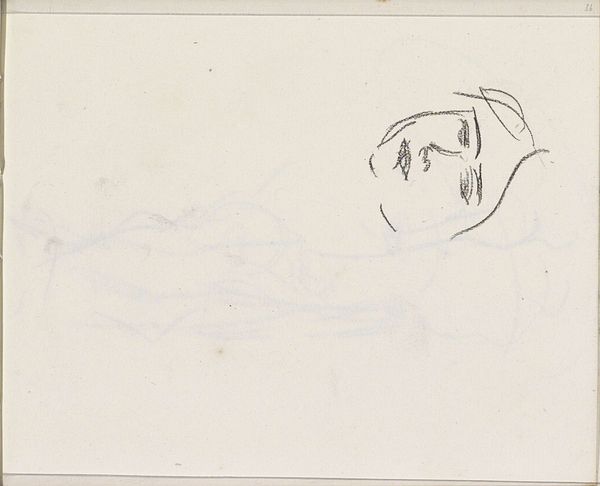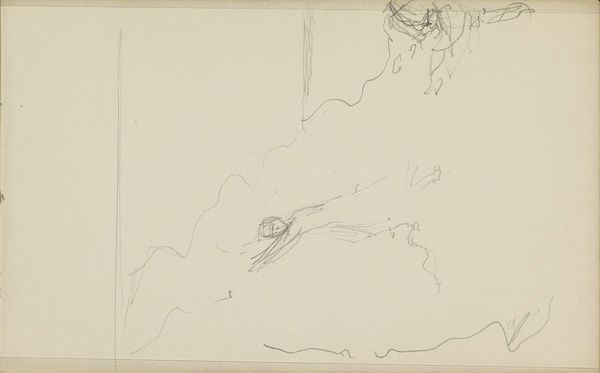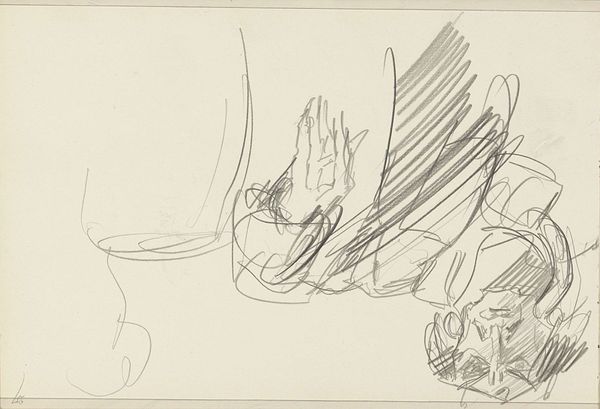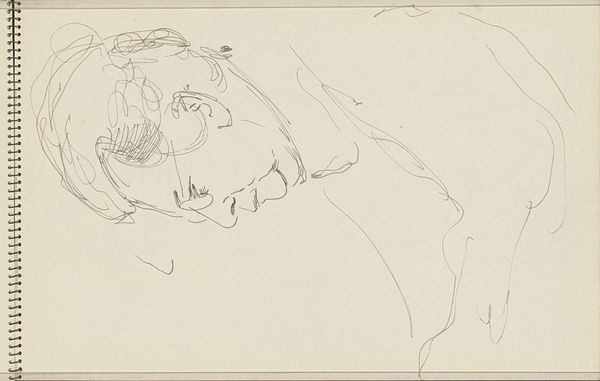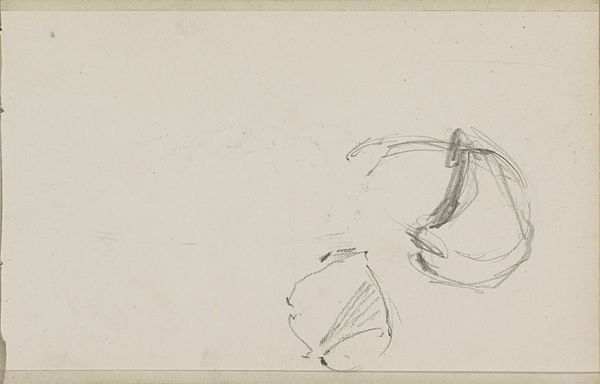
Copyright: Rijks Museum: Open Domain
Editor: Here we have Isaac Israels' "Vrouwenhoofd," a pencil drawing dating from around 1915 to 1925, now housed in the Rijksmuseum. It has such an unfinished quality about it; very ephemeral. What catches your eye about this piece? Curator: What I find particularly striking is its seeming disposability. As a preliminary sketch, its primary value lies not in its aesthetic polish, but rather its functional role in Israels’ broader artistic process. It gives insight into the artist’s initial thoughts. Editor: So, you're saying the historical value resides more in the *process* than the finished product? Curator: Precisely. Consider the art world during this period. Impressionism and early modernism were challenging traditional academic styles. A sketch like this moves away from the highly-finished salon portrait towards something more immediate and personal. It reflects the democratization of art – art becoming less about representation and more about expression. What do you think accounts for that shift? Editor: I guess with the rise of photography, painting didn't need to just record things anymore. It could explore more subjective things like emotion, or... well, even just the process of *seeing*. Curator: Indeed. And in this piece, the rapid strokes and unfinished lines speak to this shift. The question arises: was this ever intended for public display, or was it merely a step along the way to a different kind of art? It prompts a debate on where value truly lies. Editor: I see that now. Before, I saw only an unfinished work. Now, I can appreciate the cultural context, seeing this sketch as part of a much bigger shift in what art *could be* at the time. Thanks for your insight. Curator: It's been a pleasure. Considering its historical placement offers valuable insights to consider the social functions art fulfills beyond aesthetics.
Comments
No comments
Be the first to comment and join the conversation on the ultimate creative platform.
